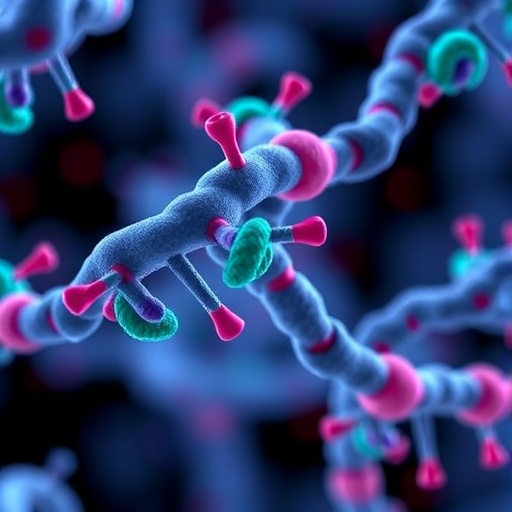A groundbreaking leap in DNA sequencing technology has unveiled previously hidden patterns of somatic mutations accumulating in normal human tissues. This landmark study, led by researchers at the Wellcome Sanger Institute in conjunction with the TwinsUK cohort at King’s College London, employs an enhanced version of nanorate sequencing (NanoSeq) to provide the most comprehensive view yet on how our cells acquire and select for mutations as we age. These insights promise to deepen our understanding of the earliest events in cancer development and the broader implications of mutation in health and disease.
NanoSeq, originally introduced in 2021, is a revolutionary ultra-accurate DNA sequencing technique that dramatically reduces the error rates which traditionally obscure the detection of rare somatic mutations. Unlike conventional sequencing methods, which struggle to distinguish genuine genomic alterations from technical artifacts especially in non-invasive samples like cheek swabs and blood, NanoSeq introduces molecular barcoding and error correction to achieve unparalleled precision. The latest study implements a targeted approach with NanoSeq, finely tuning the methodology for population-scale mutation profiling in easily accessible tissues.
For the first time, the team analyzed more than 1,000 volunteers from the TwinsUK cohort, collecting cheek swabs and blood samples with rigorous quality controls. This cohort was carefully curated to include individuals aged 21 to 91, representing diverse lifestyle factors such as smoking, alcohol consumption, and demographic variety. Through this extensive sampling, researchers mapped over 340,000 somatic mutations in normal epithelial cells lining the cheek, and tracked mutations across blood cell populations, revealing the breadth and complexity of mutational landscapes in everyday health.
One of the most remarkable discoveries is the identification of mutations in 49 genes under positive selection during normal tissue ageing. These genes include many well-known oncogenes and tumor suppressors, such as TP53, which confers a selective growth advantage on mutant cells, leading to clonal expansions. The presence of driver mutations in ostensibly healthy tissues underscores a dynamic evolutionary process occurring silently within our bodies, where mutated cell populations compete, expand, or constrain their growth in response to cellular and environmental pressures.
Mutational signatures—the fingerprints left by distinct DNA damage processes—were also illuminated with extraordinary clarity. Age-related mutation patterns dominated, but lifestyle factors like cigarette smoking and alcohol use left distinctive imprints on the genome as well. Smoking, for example, correlated with increased mutations in the NOTCH1 gene and an enlarged population of mutant clones, consistent with enhanced cellular proliferation. Meanwhile, alcohol exposure produced unique mutation profiles, highlighting the multifaceted relationship between environmental exposures and mutational processes in normal tissue.
Crucially, despite the extensive mutation burden observed, the majority of mutant clones detected were small and did not exhibit continuous growth over time. This suggests intrinsic mechanisms act to limit clonal expansion and progression towards malignancy, providing a protective check against cancer development. This dynamic equilibrium between mutation acquisition and clonal restriction shapes tissue homeostasis and may influence the onset of aging-related decline and disease susceptibility beyond cancer.
By harnessing the scalability and accuracy of NanoSeq, this research transcends previous technological limitations, facilitating direct measurement of mutation rates and selection pressures in large human cohorts. The approach opens exciting paths to quantify how inherited factors, environmental exposures, and lifestyle choices sculpt the somatic genomic landscape, laying a foundation for epidemiological studies that link genotoxic insults to disease outcomes with unprecedented resolution.
Moreover, the enhanced NanoSeq platform is rapidly becoming a pivotal tool across cancer research and human genetics. An allied study, also published today, applied NanoSeq to interrogate sperm genomes, revealing how mutation accumulation in the male germline is shaped by positive selection and increases with paternal age. Such findings broaden the scope of somatic mutation research, implicating heritable mutation processes in genetic risk propagated to future generations.
Beyond advancing fundamental science, the refined NanoSeq method holds tangible translational potential. By enabling non-invasive detection of somatic mutations indicative of carcinogenic exposures, this technology might empower precision screening and earlier interventions for cancer prevention. Furthermore, understanding mutational mechanisms at the population level could accelerate the discovery of targeted therapies aimed at curbing clonal expansions before malignancies arise.
The study’s large, diverse cohort and comprehensive mutation catalog represent a milestone in somatic genomics, making it possible to chart tissue evolutionary trajectories within healthy individuals quantitatively. Key authors highlight how this work lays the groundwork for widescale population studies, impact assessment of risk factors, and ultimately, molecular characterization of cancer risk in asymptomatic populations.
Researchers at the Wellcome Sanger Institute emphasize that integrating this ultra-high-fidelity sequencing with broad epidemiological data will refine our understanding of cancer’s earliest origins. By revealing how genetic alterations accumulate silently and are modulated by lifestyle and environment, targeted NanoSeq becomes a powerful lens for preventive medicine and public health strategies aiming to intercept cancer and other mutation-driven diseases at their inception.
In sum, this monumental study harnesses technological innovation, large-scale human sampling, and sophisticated data interpretation to shed new light on the biology of somatic mutation, clonal selection, and early tumorigenesis. It marks a new epoch in genomics, where tracing the mosaic of life’s molecular changes reveals the interplay between genes, environment, and disease risk in exquisite detail. This research heralds a promising future where DNA sequencing not only diagnoses disease but anticipates and prevents it through a clearer understanding of mutation dynamics in our bodies.
Subject of Research: Ultra-accurate DNA sequencing of somatic mutations and clonal selection in normal human tissues at population scale.
Article Title: Somatic mutation and selection at population scale
News Publication Date: 8 October 2025
Web References:
Wellcome Sanger Institute: www.sanger.ac.uk
Original research DOI: 10.1038/s41586-025-09584-w
References:
Neville, M. et al. (2025) ‘Sperm sequencing reveals extensive positive selection in the male germline.’ Nature. DOI: 10.1038/s41586-025-09448-3
Keywords: Genetic methods, somatic mutation, NanoSeq, cancer development, clonal selection, mutational signatures, sequencing technology, population genomics, epidemiology
Tags: advanced DNA sequencingcancer progression researchgenetic mutations and healthgenetic tools for disease understandingimplications of hidden mutationsmolecular barcoding techniquesmutation accumulation in agingmutation detection accuracyNanoSeq technologynon-invasive genetic profilingpopulation-scale mutation analysissomatic mutations in cancer





